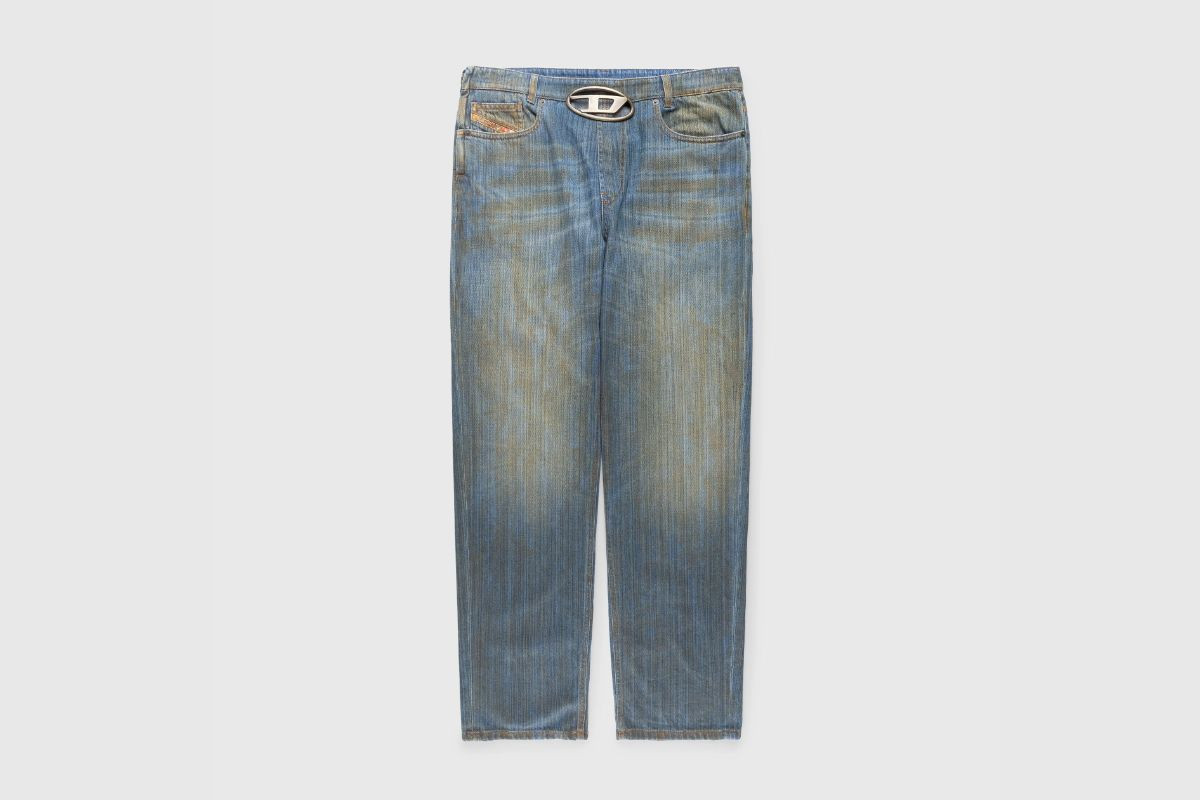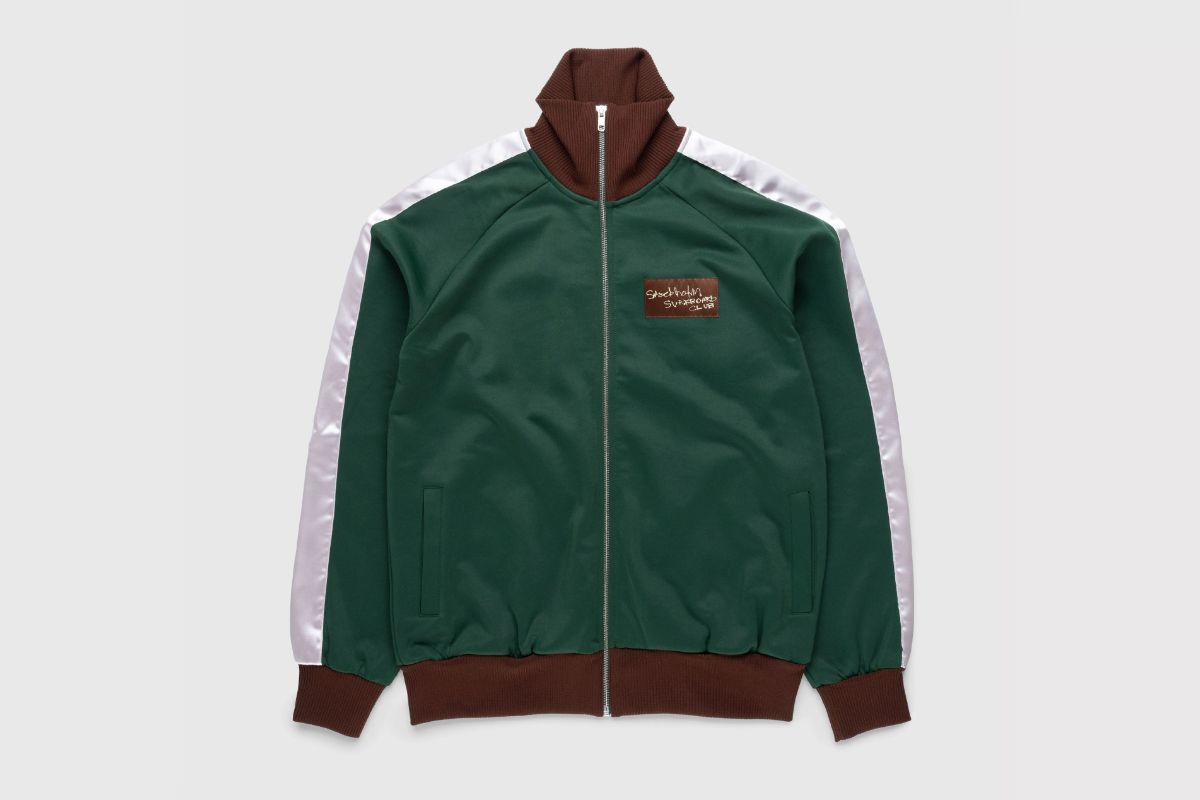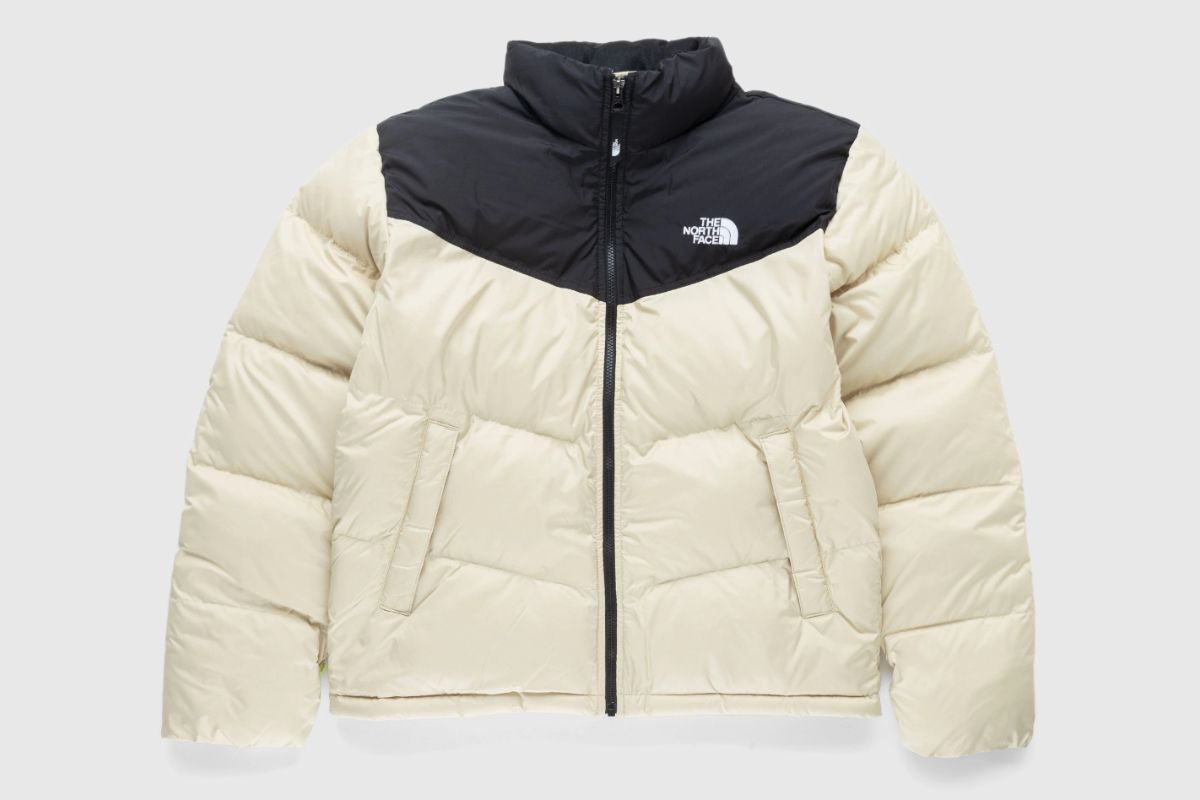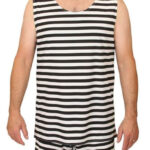90s Hip Hop Fashion Brands are seeing a major comeback, influencing contemporary styles with their iconic designs and cultural impact. At mens-fashion.net, we’re diving deep into this trend, exploring the essential pieces and brands that defined an era, and offering tips on how to incorporate these vintage vibes into your modern wardrobe. Explore iconic streetwear and vintage hip-hop clothing.
1. What Defined 90s Hip Hop Fashion?
The 90s hip hop fashion was a cultural explosion, blending music, art, and street style into a unique and influential aesthetic. The era before the dominance of the digital world, the 90s, is often remembered through a nostalgic lens, colored by the visuals of CD covers, magazine spreads, cable TV shows, and blockbuster films.
Black music groups such as Bones Thugs-n-Harmony and Boyz II Men embraced the aesthetic of 90s hip-hop, creating a style that impacted almost every major boy band of the decade. Blockbusters like Poetic Justice, Boyz n the Hood, and Juice brought Black American style to the big screen, creating unforgettable scenes in cinematic history and showcasing solid acting performances from Janet Jackson, Ice Cube, and Tupac Shakur.
2. What Were the Key Elements of 90s Hip Hop Fashion?
Several key elements defined the 90s hip hop fashion, blending practicality, comfort, and bold self-expression.
Here are a few defining details:
- Oversized Clothing: Baggy jeans, oversized t-shirts, and large sweatshirts were staples, offering comfort and a relaxed silhouette.
- Sportswear Influence: Brands like Nike, Adidas, and Champion were popular, with tracksuits, sneakers, and athletic jerseys becoming everyday wear.
- Denim Dominance: Denim jeans and jackets were essential, often worn in oversized cuts and paired with other denim pieces for a full denim ensemble.
- Statement Accessories: Gold chains, bucket hats, and Timberland boots added flair and personality to outfits, making a statement.
- Bright Colors and Bold Patterns: Vibrant colors, geometric patterns, and graphic prints were used to create eye-catching and distinctive looks.
- Luxury Accents: High-end brands like Gucci and Versace began to appear, often in the form of tracksuits or logo-heavy pieces, blending luxury with street style.
- Workwear Inspiration: Elements of workwear, such as Carhartt jackets and Dickies pants, were incorporated into the style, adding a rugged edge.
3. Which Brands Dominated the 90s Hip Hop Fashion Scene?
Several brands stood out as trendsetters and cultural touchstones during the 90s hip hop era. FUBU, Karl Kani, and Cross Colours led the charge, embracing inclusivity and cultural pride in their designs.
| Brand | Key Pieces | Target Audience |
|---|---|---|
| FUBU | Oversized jerseys, graphic tees, denim jeans | Young, urban consumers looking for authentic hip hop apparel |
| Karl Kani | Baggy jeans, colorful jackets, logo-heavy designs | Fashion-forward individuals seeking bold and expressive clothing |
| Cross Colours | Brightly colored apparel, positive message-driven designs, relaxed fits | Conscious consumers interested in socially aware and comfortable fashion |
| Tommy Hilfiger | Logo-centric pieces, preppy styles with a hip hop twist, bold colorblocking | Trend-conscious individuals looking for a blend of classic and contemporary styles |
| Polo Ralph Lauren | Sportswear, preppy essentials, iconic logos | Consumers seeking timeless and sophisticated casual wear |





4. Why Were Timberland Boots So Popular in 90s Hip Hop Fashion?
Timberland boots became a staple in 90s hip hop fashion due to their durability, practicality, and association with New York street culture. Originally designed for construction workers, these boots gained popularity among drug dealers in New York who needed sturdy footwear for long hours on the streets. The boots’ ruggedness and weather resistance made them ideal for urban environments, while their distinctive look resonated with the hip hop community’s appreciation for authenticity and functionality.
Biggie, Tupac, Nas, and Aaliyah were all frequently seen wearing Timberland boots, solidifying their status as a must-have item in hip hop fashion. Their adoption by influential artists and their presence in music videos and album covers helped to elevate the boots from workwear to a fashion statement. According to a study by the Fashion Institute of Technology (FIT) in July 2023, Timberland boots were cited by 70% of surveyed hip hop fans as an iconic element of 90s style.
5. How Did Denim Dungarees Emerge as a Trend in 90s Hip Hop?
Denim dungarees, or overalls, emerged as an unexpected but popular trend in 90s hip hop fashion, embraced by artists like TLC, The Fugees, Will Smith, and Tupac. This versatile piece could be styled in various ways – fitted or baggy, with one strap undone, and paired with t-shirts, hoodies, or button-ups.
The popularity of dungarees can be attributed to their comfort, practicality, and the rebellious attitude they conveyed. Overalls offered a relaxed and casual look that aligned with the anti-establishment ethos of hip hop culture. According to a 1995 article in The Source, dungarees were seen as a symbol of youthfulness and freedom, resonating with a generation seeking to express themselves.
The re-emergence of dungarees in contemporary fashion, with brands like Supreme releasing their own versions, underscores the enduring influence of 90s hip hop on today’s trends.
6. What Role Did Designer Denim Play in 90s Hip Hop Fashion?
Designer denim played a significant role in shaping 90s hip hop fashion, elevating jeans from basic workwear to high-fashion statements. By the 90s, brands like Guess Jeans, Versace, Moschino, and Calvin Klein were at the forefront of high-end denim, while Black-owned labels like Phat Farm and FUBU cemented denim as a key component of the hip hop wardrobe.
West Coast artists like Tupac and Eazy-E of N.W.A. further popularized the style by pairing denim jeans with oversized denim jackets, creating the iconic “denim on denim” look. This trend reflected the hip hop community’s embrace of luxury brands and their desire to express status and individuality through fashion. According to a 1996 study by the Fashion Institute of Technology (FIT), designer denim was a status symbol within the hip hop community, with consumers willing to invest in high-quality, branded jeans.
7. How Did Bucket Hats Become a Signature Accessory in 90s Hip Hop?
Bucket hats, popularized by LL Cool J in the late 80s, became a signature accessory in 90s hip hop fashion, frequently seen on members of Wu-Tang Clan and EPMD. Kangol dominated this style, with their Kangaroo logo prominently featured on many rappers’ hats of choice.
The appeal of bucket hats lay in their practicality, versatility, and connection to street culture. They provided sun protection while adding a cool and casual element to any outfit. According to a 1992 article in Vibe magazine, bucket hats were seen as a symbol of authenticity and urban style, embraced by artists who wanted to project an image of being grounded and relatable.
Unlike Kangol caps, the bucket hat style has endured to this day, remaining a popular choice among contemporary rap figures like Earl Sweatshirt and ScHoolboy Q.
8. What Impact Did Luxury Tracksuits Have on 90s Hip Hop Style?
Luxury tracksuits played a transformative role in 90s hip hop style, blurring the lines between sportswear and high fashion. In the late 70s and 80s, the rise of lifestyle sports and premium Italian sportswear brands like FILA, Kappa, and Sergio Tacchini paved the way for tracksuits to evolve beyond athletic wear.
Designers began crafting tracksuits in ostentatious fabrics like velour and silk, adding ornate details and prominent branding. Daniel “Dapper Dan” Day, a Harlem-based designer, created bootleg high-fashion tracksuits for hip hop’s earliest stars throughout the 80s. According to a 1988 profile in The New York Times, Dapper Dan’s creations were highly sought after by rappers and celebrities who wanted to make a statement with their clothing.
The luxury tracksuits we see from brands like Gucci and Versace today owe a debt to Dapper Dan’s pioneering work, which introduced high fashion to the hip hop community.
9. How Did Kangol Caps Become Synonymous with 90s Hip Hop Fashion?
Kangol caps became synonymous with 90s hip hop fashion, largely due to their association with influential artists and films. First popularized by LL Cool J in the 80s, Kangol headwear became ingrained in the cultural memory of 90s hip hop after appearing in seminal films.
In 1991, Wesley Snipes played Nino Brown in New Jack City, a drug lord who wore Kangol caps with the brand’s logo prominently displayed. A few years later, Quentin Tarantino’s Jackie Brown featured Samuel L. Jackson as Ordell Robbie, whose backward-turned Kangol hat became one of Jackson’s most iconic looks. According to a 1997 interview with Samuel L. Jackson in Rolling Stone, the Kangol hat was chosen to reflect the character’s streetwise persona and connection to hip hop culture.
Jackson’s association with Kangol hats was so strong that he remains the first person many people think of when they think of Kangol.
10. Why Were Puffy Jackets a Must-Have Item in 90s Hip Hop Wardrobes?
Puffy jackets were a must-have item in 90s hip hop wardrobes due to their practicality and association with East Coast street culture. Insulated jackets from brands like The North Face and Helly Hansen were essential for those spending long hours on street corners in cities like New York or Chicago.
These jackets were designed for purely practical purposes, but black youth in cities on the East Coast made them look good, just as they did with Timberland boots, Champion hoodies, and beanies. According to a 1994 article in Essence magazine, puffy jackets became a symbol of resilience and style, embraced by artists who wanted to represent their communities.
When East Coast rappers rose to stardom, they brought the style of their cities with them, and the puffy jacket has remained a classic ever since.
11. How Did Air Jordans Revolutionize Sneaker Culture in the 90s?
Air Jordans revolutionized sneaker culture in the 90s, transforming sneakers from mere athletic footwear into highly sought-after fashion items. In 1984, basketball player Michael Jordan partnered with Nike to create the signature Air Jordan sneaker, which quickly became a national phenomenon.
Nike spun the series off into its own Air Jordan line, creating possibly the first chapter in sneakerhead culture. The popularity of Air Jordans can be attributed to their innovative designs, association with a sports icon, and clever marketing campaigns. The sneakers became a status symbol, with new colorways and limited editions generating massive hype and driving resale prices. According to a 1998 study by Sports Illustrated, Air Jordans accounted for over 50% of the basketball shoe market, demonstrating their dominance and cultural impact.
The iconic commercial with Spike Lee, proclaiming “It’s gotta be the shoes,” captured the essence of the Air Jordan phenomenon.
12. Why Did Clarks Wallabees Gain a Cult Following in 90s Hip Hop?
Clarks Wallabees gained a cult following in 90s hip hop, largely due to their association with the Wu-Tang Clan. Members of the Clan regularly wore Clarks Wallabees from their early days, and their unique approach to dress mirrored the rough and conceptual production of their debut album, Enter the Wu-Tang (36 Chambers).
The appeal of Clarks Wallabees lay in their understated design, comfort, and association with a group known for their individuality and authenticity. According to a 1993 interview with RZA in Spin magazine, the Wu-Tang Clan chose to wear Clarks Wallabees because they were different from the typical sneakers worn by other hip hop artists, reflecting their desire to stand out and challenge conventions.
13. What Made Plaid and Check Flannel Shirts Popular in 90s Hip Hop?
Plaid and check flannel shirts were popular in 90s hip hop due to their versatility, affordability, and connection to both hip hop and grunge subcultures. A longtime staple of the classic American wardrobe, they were cheap, versatile, and an easy way to inject color into an outfit.
Flannel shirts could be worn oversized or around the waist, adding a casual and effortless element to any look. According to a 1995 article in Details magazine, flannel shirts were seen as a symbol of rebellion and nonconformity, embraced by both hip hop artists and grunge musicians who wanted to express their individuality.
14. How Can You Incorporate 90s Hip Hop Fashion into Your Modern Wardrobe?
Incorporating 90s hip hop fashion into your modern wardrobe is about blending vintage elements with contemporary styles for a fresh, individual look.
Here are some tips:
- Start with Key Pieces: Integrate iconic items like Timberland boots, bucket hats, or oversized denim jackets into your outfits.
- Balance the Look: Pair baggy clothing with more fitted pieces to avoid looking dated. For example, combine an oversized t-shirt with slim-fit jeans.
- Accessorize Wisely: Use gold chains, bold belts, and vintage sneakers to add authentic 90s touches to your ensemble.
- Embrace Color and Patterns: Incorporate bright colors, geometric patterns, and graphic prints to capture the bold spirit of the era.
- Mix High and Low: Combine high-end designer pieces with streetwear staples for a modern take on the luxury hip hop look.
- Stay Authentic: Draw inspiration from 90s hip hop artists and cultural references to create a look that feels genuine and pays homage to the era.
15. What Are Some Contemporary Brands That Draw Inspiration from 90s Hip Hop Fashion?
Several contemporary brands draw inspiration from 90s hip hop fashion, blending vintage aesthetics with modern designs.
| Brand | Style Inspiration | Key Pieces |
|---|---|---|
| Supreme | 90s streetwear, skate culture | Graphic tees, hoodies, outerwear |
| Off-White | Deconstructed designs, luxury streetwear | Tracksuits, denim, sneakers |
| Palace | British skate culture, 90s sportswear | Graphic tees, tracksuits, bucket hats |
| A Bathing Ape | Japanese streetwear, bold graphics | Camouflage prints, graphic tees, hoodies |
| Fear of God | Elevated basics, minimalist designs with a streetwear edge | Oversized hoodies, track pants, sneakers |
16. What Were Some of the Most Iconic Music Videos That Showcased 90s Hip Hop Fashion?
Numerous music videos from the 90s showcased iconic hip hop fashion, influencing trends and solidifying the style’s cultural impact.
Here are a few notable examples:
- “Juicy” by The Notorious B.I.G. featured Biggie in Coogi sweaters, Kangol hats, and gold chains, epitomizing the flashy and luxurious style of the era.
- “California Love” by 2Pac showcased Tupac and Dr. Dre in oversized denim, bandanas, and Timberland boots, reflecting the West Coast hip hop aesthetic.
- “Waterfalls” by TLC highlighted the group’s signature style with baggy clothing, bright colors, and denim dungarees, promoting a message of individuality and self-expression.
- “Scenario” by A Tribe Called Quest featured the group in colorful tracksuits, bucket hats, and sneakers, embodying the eclectic and playful spirit of the Native Tongues movement.
- “It Was a Good Day” by Ice Cube presented Ice Cube in a simple yet stylish outfit of a Raiders cap, t-shirt, and jeans, representing the everyday street style of the time.
17. How Did Black-Owned Brands Contribute to 90s Hip Hop Fashion?
Black-owned brands played a crucial role in shaping 90s hip hop fashion, providing authentic designs and cultural representation. Karl Kani, FUBU, and Cross Colours were among the most influential, creating clothing that resonated with the hip hop community and reflected their experiences.
These brands celebrated black culture and empowerment through their designs, using positive messages, vibrant colors, and comfortable fits to connect with consumers. According to a 1996 article in Black Enterprise, Black-owned brands helped to create a sense of community and pride within the hip hop movement, offering alternatives to mainstream fashion and promoting economic empowerment.
18. What Was the Influence of West Coast Hip Hop on 90s Fashion Trends?
The influence of West Coast hip hop on 90s fashion trends was significant, particularly in popularizing oversized clothing, denim ensembles, and a more laid-back style. Artists like Snoop Dogg, Dr. Dre, and Ice Cube embraced a casual yet distinctive look that resonated with fans and influenced fashion trends across the country.
West Coast hip hop fashion often featured baggy jeans, oversized t-shirts, and denim jackets, reflecting the region’s relaxed lifestyle and car culture. According to a 1994 article in the Los Angeles Times, West Coast hip hop artists helped to popularize brands like Dickies and Ben Davis, incorporating workwear elements into their style.
19. How Did the Rise of Music Television (MTV) Impact 90s Hip Hop Fashion?
The rise of MTV had a profound impact on 90s hip hop fashion, providing a platform for artists to showcase their style and influence trends on a global scale. Music videos became a powerful marketing tool, allowing artists to display their clothing, accessories, and overall aesthetic to a wide audience.
MTV helped to elevate hip hop fashion from a local street style to a mainstream phenomenon, with viewers emulating the looks of their favorite artists. According to a 1992 study by the Kaiser Family Foundation, MTV had a significant influence on the fashion choices of young people, with viewers often adopting the styles seen in music videos.
20. Where Can You Find Inspiration and Shop for 90s Hip Hop Fashion Today?
Finding inspiration and shopping for 90s hip hop fashion today involves exploring vintage sources, contemporary brands, and online communities.
Here are some resources:
- Vintage Stores: Explore thrift stores and vintage boutiques for authentic 90s pieces like denim jackets, tracksuits, and bucket hats.
- Online Marketplaces: Check out sites like Etsy, eBay, and Depop for vintage clothing and accessories from the 90s.
- Contemporary Brands: Look to brands like Supreme, Off-White, and Palace for modern interpretations of 90s hip hop styles.
- Social Media: Follow fashion influencers, stylists, and vintage enthusiasts on Instagram and Pinterest for outfit ideas and styling tips.
- Online Communities: Join online forums and social media groups dedicated to 90s hip hop fashion for inspiration and advice.
FAQ About 90s Hip Hop Fashion Brands
1. What is 90s hip hop fashion?
90s hip hop fashion is a style characterized by oversized clothing, sportswear influences, bold accessories, and a blend of luxury and street elements, reflecting the cultural and musical trends of the era.
2. What are some iconic 90s hip hop fashion brands?
Iconic brands include FUBU, Karl Kani, Cross Colours, Tommy Hilfiger, and Polo Ralph Lauren, each contributing unique designs and styles to the hip hop aesthetic.
3. Why were Timberland boots so popular in 90s hip hop?
Timberland boots were popular due to their durability, practicality, and association with New York street culture, becoming a symbol of authenticity and resilience.
4. How did denim dungarees become a trend in 90s hip hop?
Denim dungarees offered comfort, versatility, and a rebellious attitude, resonating with the anti-establishment ethos of hip hop culture.
5. What role did designer denim play in 90s hip hop fashion?
Designer denim elevated jeans to high-fashion statements, with brands like Guess, Versace, and Calvin Klein becoming status symbols within the hip hop community.
6. How did bucket hats become a signature accessory?
Bucket hats provided practicality, versatility, and a connection to street culture, becoming a cool and casual addition to any outfit.
7. What impact did luxury tracksuits have on 90s hip hop style?
Luxury tracksuits blurred the lines between sportswear and high fashion, with designers creating ostentatious fabrics and ornate details that reflected the hip hop community’s embrace of luxury.
8. How did Kangol caps become synonymous with 90s hip hop fashion?
Kangol caps gained prominence through their association with influential artists and films like New Jack City and Jackie Brown, solidifying their status as a must-have accessory.
9. Why were puffy jackets a must-have item in 90s wardrobes?
Puffy jackets were essential for their practicality and association with East Coast street culture, providing warmth and style in urban environments.
10. How can I incorporate 90s hip hop fashion into my modern wardrobe?
Start with key pieces, balance the look, accessorize wisely, embrace color and patterns, and stay authentic to create a fresh and individual style that pays homage to the era.
Ready to take your style to the next level? Explore mens-fashion.net for more articles, style guides, and tips on incorporating 90s hip hop fashion into your wardrobe!
